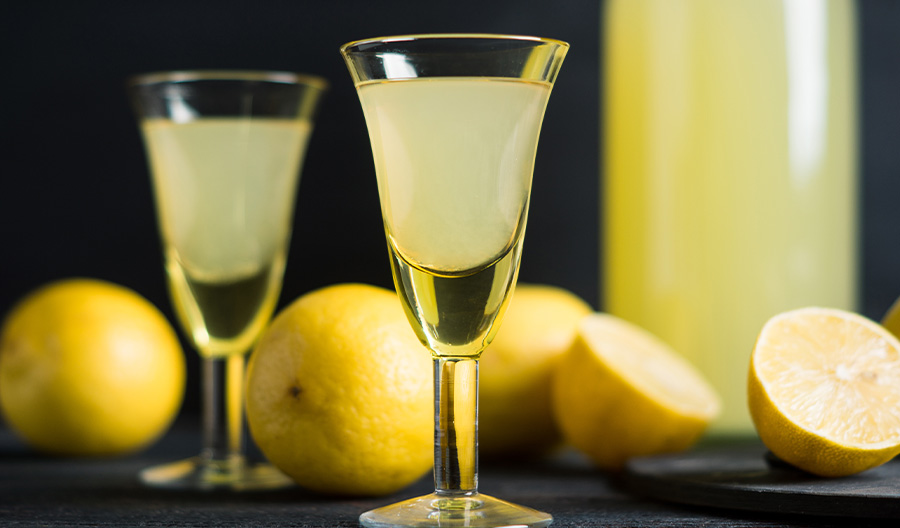Limoncello, the golden elixir that captures the essence of the sun-soaked Amalfi Coast, embodies more than just a drink—it's a celebration of the Mediterranean spirit in a bottle. This lemon-infused liqueur has transcended its Italian origins to become a symbol of zest, vibrancy, and the joyous art of sipping sunshine.
What is the history of Limoncello?
Limoncello is a traditional Italian liqueur, predominantly produced in Southern Italy in regions such as Campania, Sicily, and Sardinia. Its history is steeped in the sunny groves of these regions, where the finest lemons are grown. The exact origin of limoncello is a topic of debate, with several regions claiming its invention.
The most popular theory attributes the creation of limoncello to the early 20th century on the island of Capri, where it was supposedly crafted by the affluent families as a homemade liqueur. The recipe was then passed down through generations, and over time, it became a symbol of hospitality in Italian homes. Another theory suggests that limoncello has much older roots, tracing back to the Middle Ages. Monks and nuns in monasteries were known to make liqueurs from local produce, including lemons. They used these liqueurs for medicinal purposes and as offerings.
Regardless of its precise origin, limoncello remained a homemade specialty for many years, shared with friends and family after meals. It was not until the late 1980s that Massimo Canale, a businessman from Capri, started producing limoncello commercially. He was also the first to register the trademark 'Limoncello'. Since then, limoncello has gained international recognition, becoming one of Italy's most popular exports. Despite its commercial success, many Italian families still proudly make their own limoncello, preserving the traditional methods and recipes passed down through generations.
Today, limoncello is not just a drink, but a cultural icon, representing the Italian love for life, food, and conviviality. Its sweet, tangy flavor and vibrant yellow color are a testament to the sun-drenched landscapes of Southern Italy, making every sip a journey to the Italian coast.

What are the key ingredients in Limoncello?
The first and most important ingredient is lemons. Specifically, the zest of lemons, which is the outer, yellow part of the peel. The type of lemons used can greatly affect the flavor of the Limoncello. In Italy, the Sorrento lemon, known for its fragrant peel and slightly sweet pulp, is often used.
The second key ingredient is alcohol. Traditionally, pure grain alcohol is used due to its high alcohol content, which is necessary to extract the lemon oils from the zest. However, high-proof vodka can also be used as a substitute.
Thirdly, sugar is used to sweeten the liqueur. The amount of sugar can be adjusted to taste, but a typical Limoncello recipe calls for a substantial amount to balance the tartness of the lemons.
How is Limoncello typically served and consumed in Italy?
In Italy, limoncello is often served as a 'digestivo' or after-dinner drink. The sweet, tangy flavor is thought to aid digestion, making it the perfect conclusion to a heavy meal. It is typically consumed neat, meaning it's served without any mixers or ice.
Another common way to enjoy limoncello in Italy is to serve it with dessert. It pairs particularly well with traditional Italian sweets such as cannoli or tiramisu. Some people also like to drizzle a little limoncello over fresh fruit or ice cream for a zesty twist.
Despite its traditional role as an after-dinner drink, limoncello is versatile and can be used in a variety of cocktails. It can be mixed with Prosecco for a sparkling aperitif, or with vodka and lemon juice for a refreshing limoncello martini. In some regions of Italy, particularly in the south where limoncello originates, it's not uncommon to see it served chilled straight from the freezer. This is especially popular during the hot summer months, when the icy-cold, lemony liqueur provides a welcome respite from the heat.
Seven popular Limoncello-based cocktails
Limoncello Spritz is a refreshing cocktail that combines limoncello with prosecco and soda water. It's often garnished with fresh mint or basil for an extra burst of flavor. This cocktail is perfect for summer gatherings or as an aperitif before a meal.
Limoncello Martini, also known as a 'Lemontini', is a sophisticated cocktail that blends limoncello with vodka and a splash of lemon juice. It's typically served in a chilled martini glass and garnished with a lemon twist.
Limoncello Mojito is a unique twist on the classic mojito. It's made by muddling fresh mint and lime, then adding rum, limoncello, and soda water. The result is a refreshing and citrusy cocktail that's perfect for hot summer days.
Limoncello Margarita is a delightful Italian-Mexican fusion cocktail. It's made by combining limoncello, tequila, fresh lime juice, and a touch of orange liqueur. It's typically served in a salt-rimmed glass and garnished with a lime wheel.
Limoncello Gin Collins is a light and bubbly cocktail that's perfect for brunch or afternoon sipping. It's made by combining gin, limoncello, fresh lemon juice, and soda water. It's typically served in a tall glass and garnished with a lemon slice and a cherry.
Limoncello Lemonade is a simple and refreshing cocktail that's perfect for a hot summer day. It's made by combining limoncello with fresh lemonade. You can also add a splash of vodka or gin for an extra kick.
Limoncello and Prosecco Float is a fun and festive cocktail that's perfect for celebrations. It's made by combining limoncello and prosecco, then topping it off with a scoop of lemon sorbet. The result is a bubbly and sweet cocktail that's sure to impress your guests.

